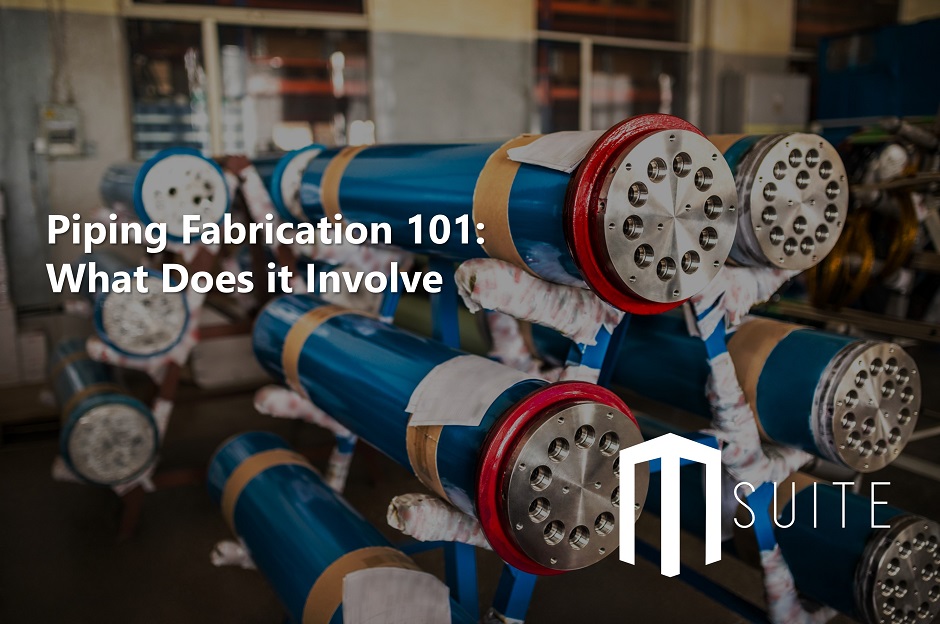Pipe fabrication can be defined as cutting, beveling, and welding piping components as the design documents dictate. Piping fabrication is highly complex as it involves hundreds of components and steps and requires high precision. Therefore, piping fabrication needs to be adequately planned, scheduled, and executed per design requirements in any construction project. Furthermore, pipe fabrication requires maximum quality and system integrity to ensure the proper functioning of each item and minimize accidents.
In this article, we feature piping fabrication, its complexity, and its importance to the construction industry.
Piping Fabrication Types
Pipe fabrication work is classified into two groups.
- Fab Shop Pipe Fabrication
- Pipe Fabrication in the Field
Various factors determine whether pipes will be shop fabricated or field fabricated, or both methods will be used. In most cases, both shop and field pipe fabrication is used. The primary deciding factors are the construction project’s type, size, and profitability. Other factors include piping material, surface treatment post-fab, environmental conditions, accessibility of equipment, skilled personnel availability, and time requirement.
In general practice, field fabricated items include small bore pipes and threaded and socket welded pipes, whereas butt welded pipes, modular items, pipe bending, etc., are fabricated in the shop.
The pipe fabrication process, fittings, and components are assembled by welding into spool assemblies at the fabricator’s facility or a workshop, generally known as a pipe fabrication shop. The spools are labeled using an identifier and transported to the construction site for installation. In pipe fabrication, all these assemblies are done at the construction site.
Pipe Fabrication Tools/Equipment
Various equipment and tools are used during the pipe fabrication process, including, but not limited to:
- Pipe Jacks and adjustable Pipe Rollers
- Welding Machines
- Pipe Riggings and transport equipment
- Chain Clamps aka C Clamps
- Pipe Fit-up Tools and Pipe Purging Equipment
- Pipe Cutting and Beveling Equipment
- Adjustable Wrench/Torque Wrench Combination Wrench/Hammer Wrench
- Flange Alignment Tools and Pins
- Center Punch and Compass/Contour Marker
- Pipe Threader and Fork Lift and Grinder
- Wraparound Tapes
- Hydraulic Crane/Tower Crane
- Pipe Bending Machine, etc.
Pipe Fabrication tools
Preparation for Pipe fabrication
Prepping for pipe fabrication requires careful review of the drawing specifications to calculate essential parameters, such as considering welding and tack welding processes and any distortion that may arise—the necessary tools for fitting up flanges and pipes, such as pipe clamps and supports. Then, using drawings, the fabricator prepares a simple wire model of the pipe spool, which is helped by technology today. Material take-off and the client’s fabrication specifications are also supplied to the pipe fabricators.
Pipe fabrication in a Shop
Piping Fabrication Procedure
The pipe fabrication process requires assembling pipes and pipe fittings according to the spool drawing. Pipe fabricators must consider the assembly size and potential issues with transportation. For example, Subassemblies can be an effective transportation method. The below steps highlight piping fabrication:
1. Cutting and Marking: Marking is done per the design drawing requirement, and the supervisor verifies the same before cutting. Pipe cutting is typically performed using:
— Carbon Steel – By gas cutting & grinding
— Alloy Steel – By flammable cutting or grinding
— Stainless Steel – By plasma cutting or grinding
2. Tagging: Pain marking, dye stamping, or Tagging–pipe heat numbers are added to the cut pieces before cutting the pipe.
3. End-Prep: End preparation (beveling) and fit-up are performed following an approved Specification and WPS.
4. Welding Pipes: Precaution is necessary to ensure that longitudinal seams on joining pipes do not come in one line in a butt-welded joint. Seams need to clear branch connections and staggered at least 100 mm apart. It’s essential to ensure that longitudinal seams are not resting on the steel structure.
5. Welding Fittings and Pipes: Pipes and Fittings for fit-up are placed on a temporary pipe bed, and supports are secured. The arrangement is then inspected for quality Fit-Up. Once inspection clearance is received, Qualified welders weld joints.
6. Marking Details: Various details line pipeline No., Component Heat No., Joint No., Fit-up inspection signature, Welder No., Visual inspection signature, and welding date are marked near the joint using a metal paint marker.
— The Spool Number on the pipe is marked with a paint marker, and an aluminum tag is tied to the spool.
7. Heat-treatments: Preheating and PWHT will be done at the shop or field as per project-specific requirements.
8. Inspections: Crucial to piping fabrication, NDT testing is performed per the project specs or guidelines. When clearance is received, spools are released for erection/painting with a release tag.
— Rejected Spools are identified with yellow and black tags and sent for repair work, and will need to pass NDT.
9. Documentation: Field inspections performed after painting for quality control and recorded in the prescribed format. After painting check, the spool is released for erection.
10. Stainless Steel Pipe Fabrication: Stainless Steel piping fabrication is performed in the shop with an isolated area from carbon steel and alloy steel. The equipment and tools used for Carbon Steel fabrication should not be used for Stainless Steel. Stainless steel tools are used for brushing, grinding, clamping, etc.
11. Protection: For the temporary storage and safety installation, all completed pipe spools with flanged raised faces are fitted with plywood blinds, and spool ends shall be equipped with good caps.
Pipe Fabrication Specification
Pipe fabrication specification is engineering documents that provide all guidelines to be followed by pipe fabricators for spool pipe fabrication. The specification for piping fabrication offers the minimum requirement of preparation of detailed shop drawings and the fabrication requirements for inspection and testing. In addition, it lists down all applicable codes and standards.







